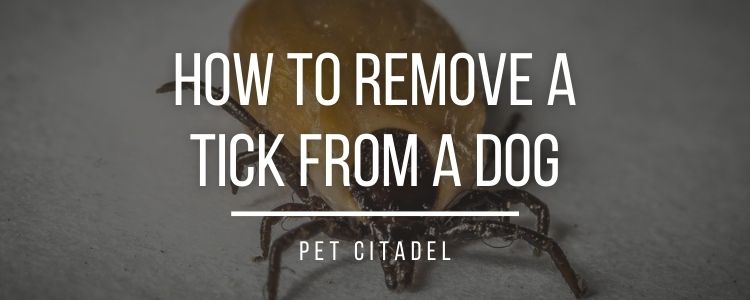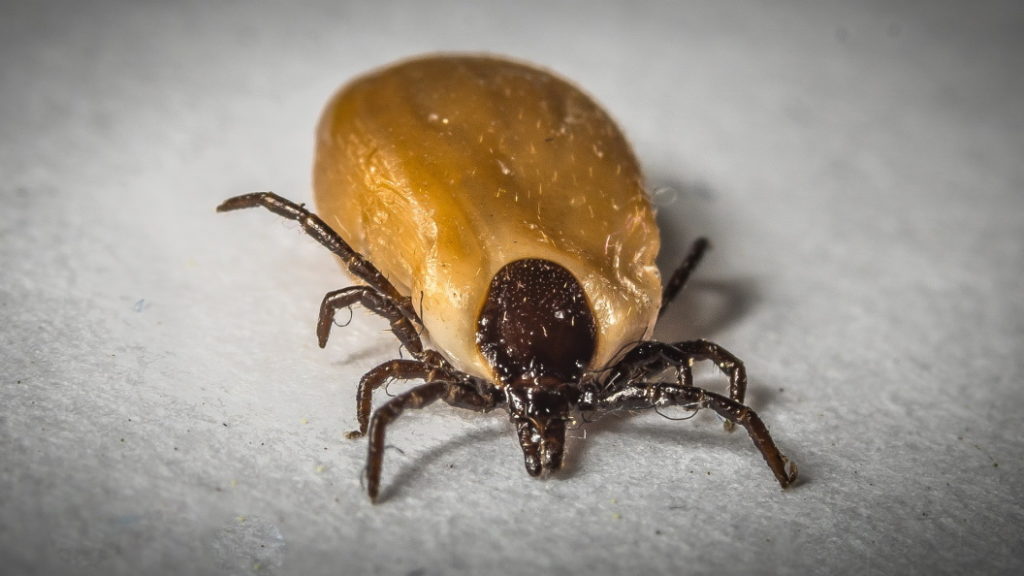This post may contain affiliate links. You can view our affiliate disclosure here.

If you own a dog, you are probably already aware that ticks are a fairly common problem. Ticks can attach to your dog and penetrate under its skin when it spends time outside — it can happen not only in the wilderness, but also in your own backyard.
This is why every dog owner should know how to properly remove a tick from a dog, especially if access to veterinary care is limited.
How To Get Rid Of Ticks On A Dog
The goal should be to prevent ticks from attaching to your dog altogether. But once a tick has attached, it should be removed as soon as possible within 24-48 hours of being bitten.
If your dog goes out often in tick-infested areas, you should check its skin daily. Otherwise, inspect it after being in the forest or any other location where ticks are known to be present.
Ticks prefer to hide between toes, on the belly, and around the ears. They are also fond of the anus, tail, and eyelids. Inspect these areas thoroughly for any signs of ticks.
Step 1: Get help if possible.
After confirming the presence of ticks on your dog, the first step in removing them is to seek the assistance of another person, if able.
Having the help of another adult, older child, or teen in your home may make a huge difference in removing ticks from your dog’s body because they can help keep the dog still while you work.
If you don’t have help or are unable to ask for help, you can certainly do the job yourself. However, if the dog is not calm and has trouble keeping still, the next steps on this list may be challenging.
Step 2: Get all the tools and supplies you need.

Next is to make sure you have all of the items you’ll need before handling your dog. If your dog suspects anything is wrong, they may be reluctant to stay calm, or skeptical when you attempt to call it over to you.
Have everything you need in one place. To get started, you will need:
- tweezers
- a warm, soapy washcloth
- Vaseline
- alcohol
- dog treats to get started
If your dog urinates when scared, you may also require a pee pad or towel.
Step 3: Remove the tick.

Bring your dog over to where you are. Give it treats to keep it occupied while you look for the ticks on its body.
If the tick has put its head into the skin, you’ll need to hold its body using tweezers, as close as possible to the dog’s skin, and pull straight up.
Pulling at an angle when removing ticks can cause the tick’s mouthparts to snap off and remain embedded in the dog’s skin. This may result in further infection.
If possible, place the tick in a sealed bag and bring it to your veterinarian for examination.
Step 4: Disinfect the affected area.
After you’ve completely removed the tick, including the mouthparts, it’s time to clean the bite site. To limit the chance of infection, use alcohol or a washcloth dipped in warm soapy water to thoroughly clean the area.
Although disinfecting the area does not lessen the danger of tick-borne illness once your dog is bitten, it helps the skin heal faster and reduces the chances of developing a dangerous infection.
Step 5: Apply Vaseline.

Apply Vaseline to the tick bite wound after cleaning and disinfecting it. You can use other over-the-counter antibiotic ointments for this procedure, but avoid using any that contains lidocaine as an additional component. Additionally, avoid using extra-strong antibiotics as they may lead to overdosing.
Apply Vaseline sparingly to the wound; a thin layer is enough. If you think your dog will end up licking the Vaseline off, you may want to skip this step unless you can keep it from licking it until it dries.
Step 6: Be on the lookout for any symptoms of illness.
Finally, after removing the tick and treating the site appropriately, all you have to do now is keep an eye out for signs of illness. If your dog seems to be ill, lazy, or weak, or exhibits any other signs, take it to the vet immediately.
If you kept the tick you took from your dog in a sealed bag, consider carrying it to the vet for examination. The vet should inform you whether your dog is at risk of a serious tick-borne infection due to the bite.
Conclusion
All in all, it’s straightforward and not difficult to remove a tick from a dog, but it might require the help of one or more people to complete the job.
If your dog is especially resistant to you holding it still and removing ticks, or if you have other queries or worries, you may always take your dog to the vet to get the tick removed professionally. You will have to pay for this service, but the veterinarian can also check both the tick and the dog for evidence of Lyme disease or other tick-borne illnesses.
Thanks for reading this step-by-step guide. Do you need to remove some ticks from your dog? Tell us about your experience in the comments below.



